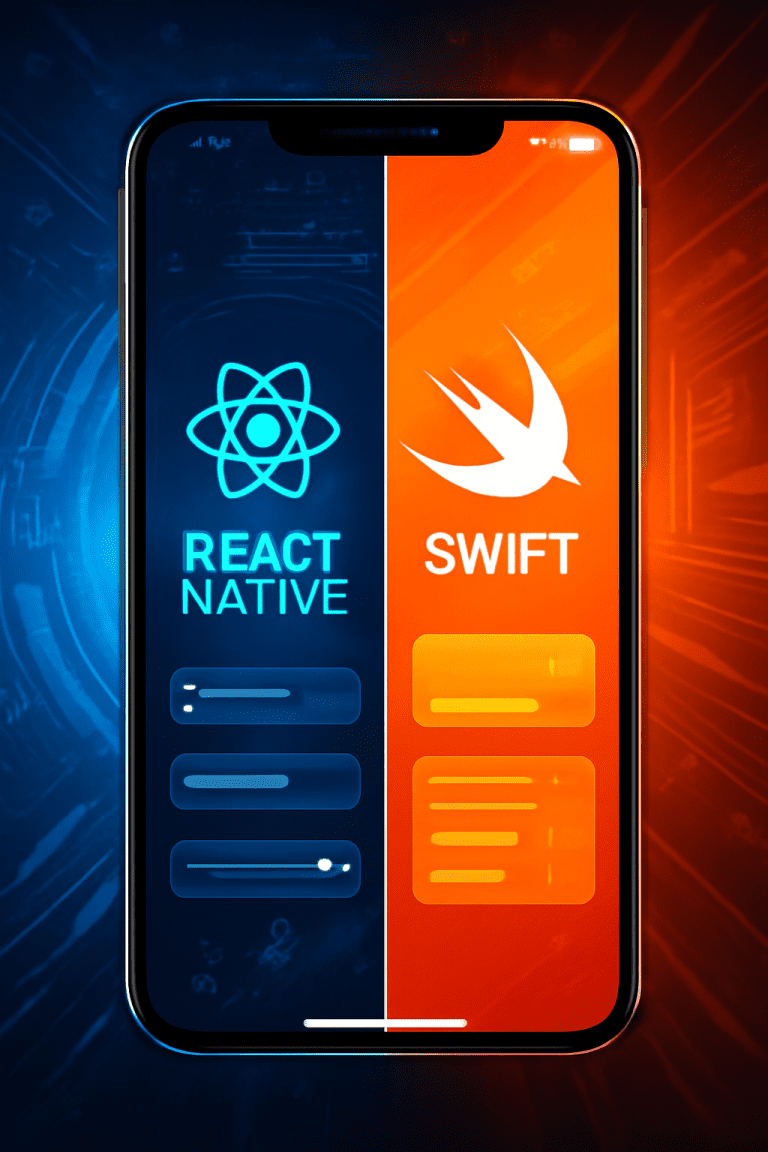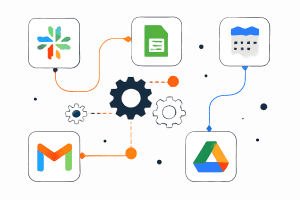Introduction
Selecting the ideal mobile app development framework is a pivotal decision influencing your project’s speed, scalability, budget, and user experience. React Native and Swift are two leading options—each with distinct strengths. Swift is Apple’s native language designed solely for iOS apps, renowned for performance and seamless access to all device features. React Native, by contrast, is a cross-platform framework that lets you use a single codebase for both iOS and Android, accelerating development and reducing costs. Understanding their differences is key to ensuring your app aligns perfectly with your business goals.
React Native vs Swift: Key Comparison
1. Performance and Native Access
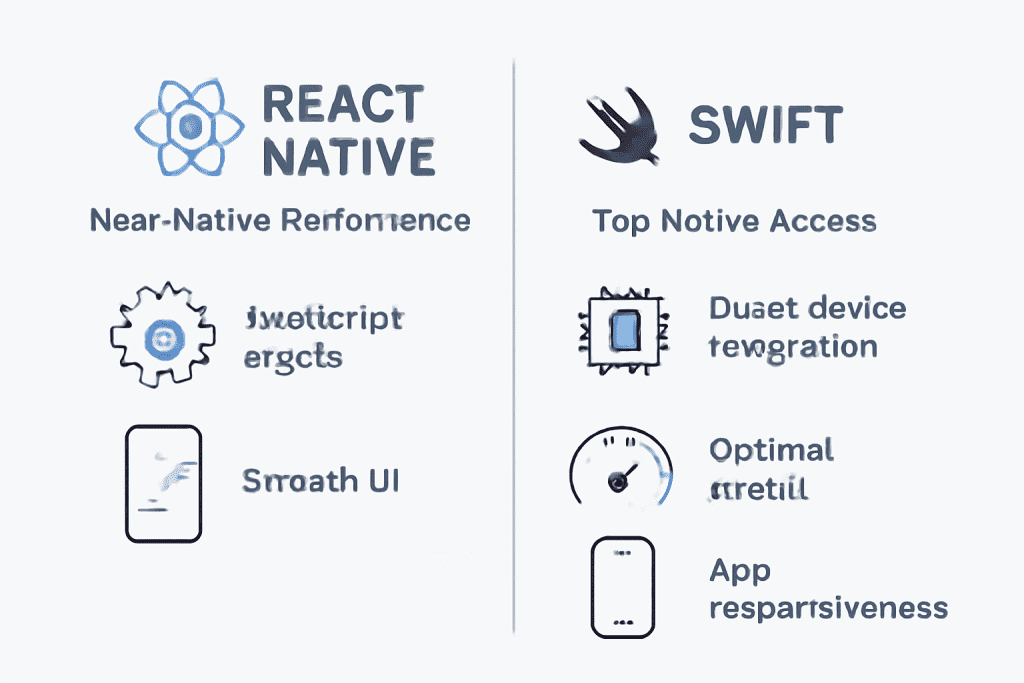
-
Swift delivers best-in-class performance and is tightly integrated with the iOS ecosystem. Apps built with Swift have direct access to hardware features, minimal latency, and are better for graphic-intensive or complex applications.
-
React Native achieves near-native performance for many scenarios but introduces a JavaScript bridge, which can cause minor delays, especially in heavy or animation-rich apps. It covers most native features via libraries but some integration may be complex.
2. Development Speed and Cost
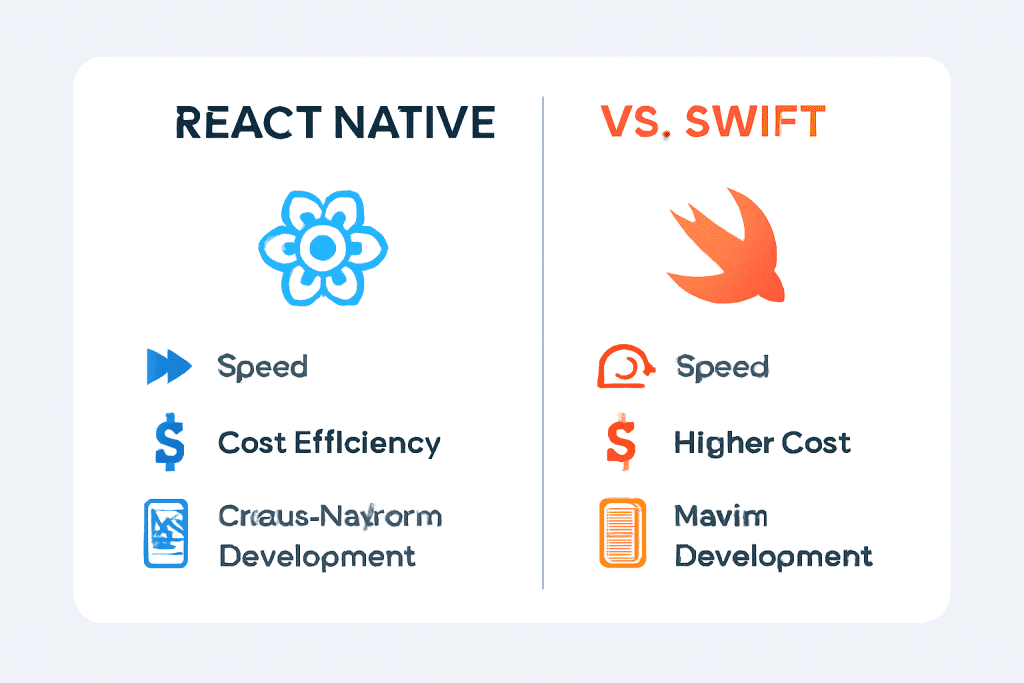
-
React Native allows code reuse across iOS and Android. This means a single team can manage both platforms, reducing time-to-market and cost—a great advantage for startups and businesses looking to maximize resources. Hot reloading and a vast community speed up iteration.
-
Swift is limited to iOS. If you need Android too, you’ll need separate development—which doubles the effort and price. However, for projects focused exclusively on Apple devices, Swift can be more efficient in the long run.
3. User Interface and Experience
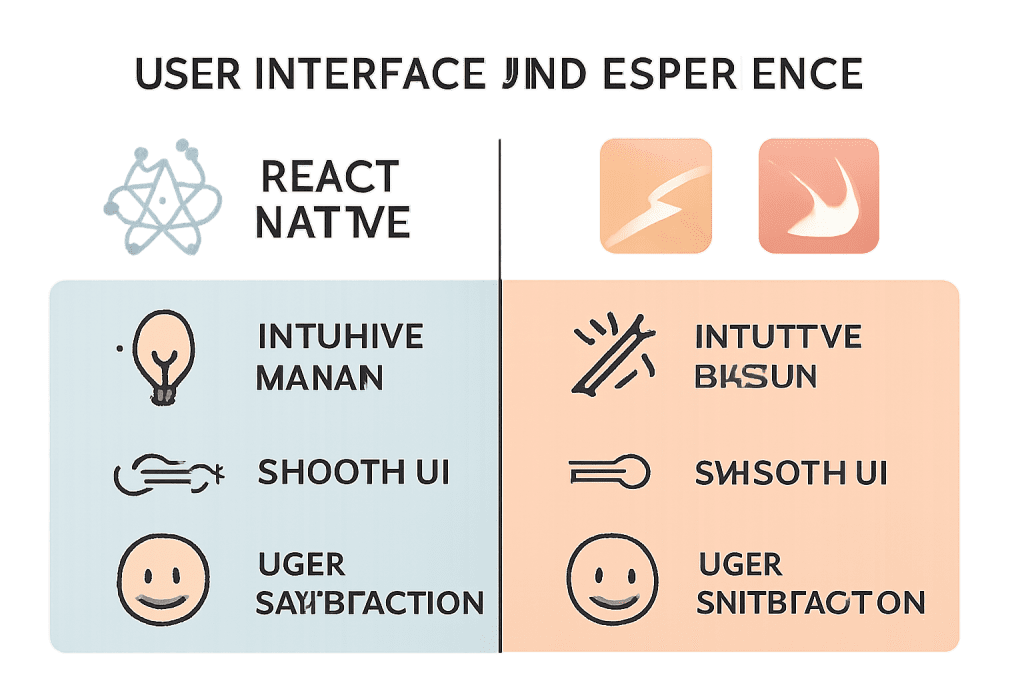
-
Swift enables pixel-perfect, highly polished native interfaces. You can leverage UIKit and SwiftUI for smooth, best-in-class designs and user experiences—ideal for feature-rich, brand-centric apps.
-
React Native can mimic native UI well and offers third-party libraries for most UI needs. However, there may be small discrepancies compared to native apps, especially as OS features evolve.
4. Developer Talent and Community
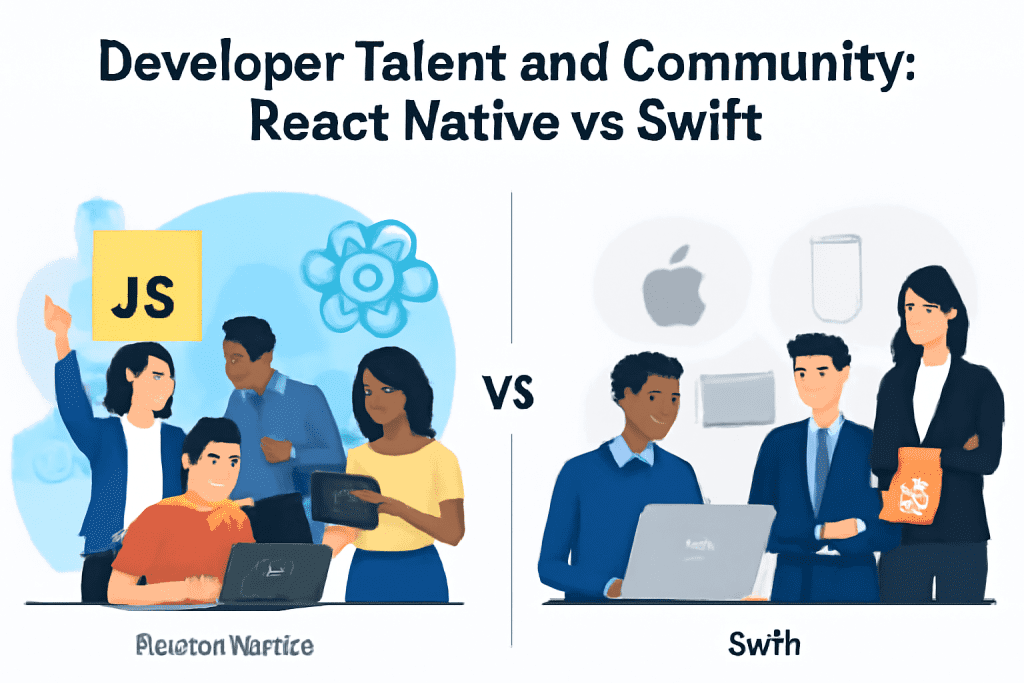
-
React Native benefits from JavaScript’s massive talent pool. Hiring is typically easier and cheaper; finding full-stack or cross-platform developers is usually straightforward.
-
Swift developers are fewer, especially experienced senior iOS programmers. Their deep domain knowledge, however, benefits highly complex native projects.
5. Suitability for Business Use Cases
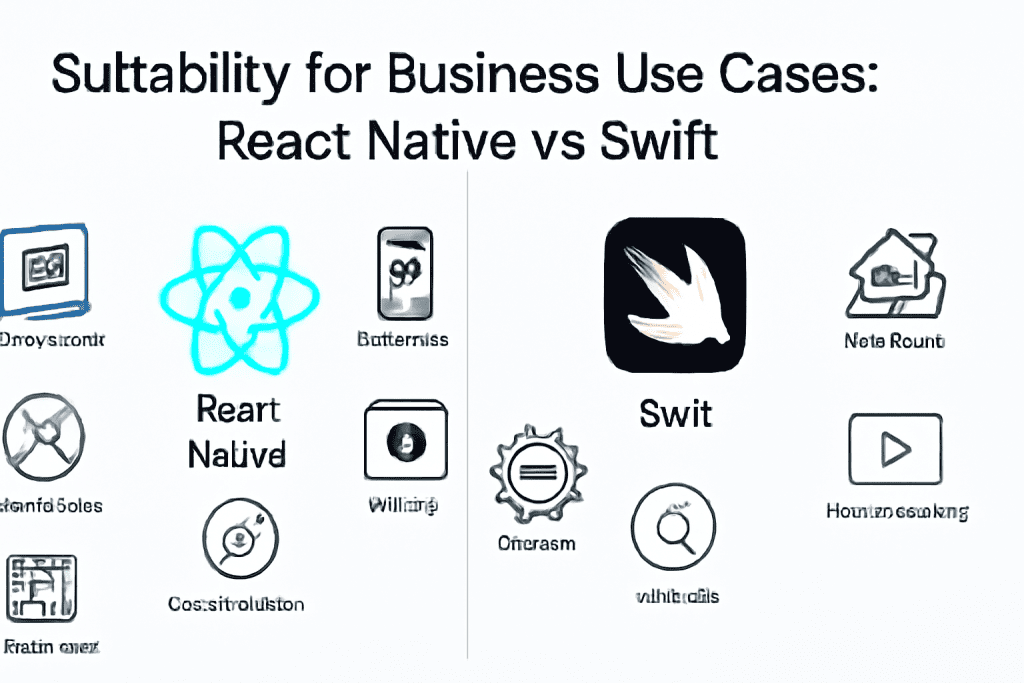
-
Use React Native when:
-
You want to build for both iOS and Android with a single codebase.
-
Your app isn’t heavy on device-specific features or complex animations.
-
Fast time-to-market and cost efficiency are top priorities.
-
You are developing MVPs, prototypes, or need to quickly adapt to user feedback.
-
-
Use Swift when:
-
Your target audience is exclusively on iOS.
-
You require optimal app performance, stability, and security.
-
The app needs advanced device features or high-end graphics (e.g., AR, video processing).
-
You want a long-term, future-proof investment in Apple’s ecosystem.
-
React Native vs Swift: Pros & Cons Table
| Feature/Criteria | React Native | Swift |
|---|---|---|
| Platforms | iOS & Android (cross-platform) | iOS only |
| Performance | Near-native, minor lag for complex tasks | Top/Native Performance |
| UI/UX | Good, minor discrepancies with native | Best-in-class_native_ui |
| Code Reusability | High (80%+ across platforms) | None (iOS specific) |
| Development Speed | Rapid, hot reloading | Moderate, separate for iOS/Android |
| Cost Efficiency | Lower, one team for both OS | Higher if both iOS and Android |
| Access to Features | Most, some via plugins/bridges | Full/native access |
| Community & Talent | Large, JS developers widely available | Limited, deep iOS expertise |
| Maintenance | Easier (one codebase) | Separate codebase per platform |
Conclusion
Choosing between React Native and Swift hinges on your business priorities. If you need a fast, cost-effective path to both iOS and Android, React Native is a leading choice—especially for MVPs or budget-conscious projects. For high-performance, visually intricate, or feature-rich iOS apps demanding long-term stability, Swift is the clear winner. Assess your audience, technical needs, and growth plans before deciding.
A well-aligned framework choice means faster delivery, lower costs, and better scaling as your app and business grow.
Ready to build your next mobile app? Consult with experienced developers to analyze your needs and set the foundation for scalable, future-proof success.
FAQ
1. Can I use both React Native and Swift in one app?
Yes, you can. Some apps use React Native for most UI and add Swift modules for high-performance or device-specific features.
2. Which is more cost-effective for startups?
React Native is usually more cost-effective for startups needing both iOS and Android apps.
3. Is React Native secure enough for enterprise apps?
With the right practices and modules, React Native can deliver secure apps—though Swift may offer easier integration with Apple’s security features.
4. When should I avoid cross-platform frameworks?
If your app needs advanced animations, AR, or frequent use of the latest iOS capabilities, native (Swift) is better.
5. Which framework is better for app speed and responsiveness?
Swift always wins in speed and performance for complex, high-demand apps.
